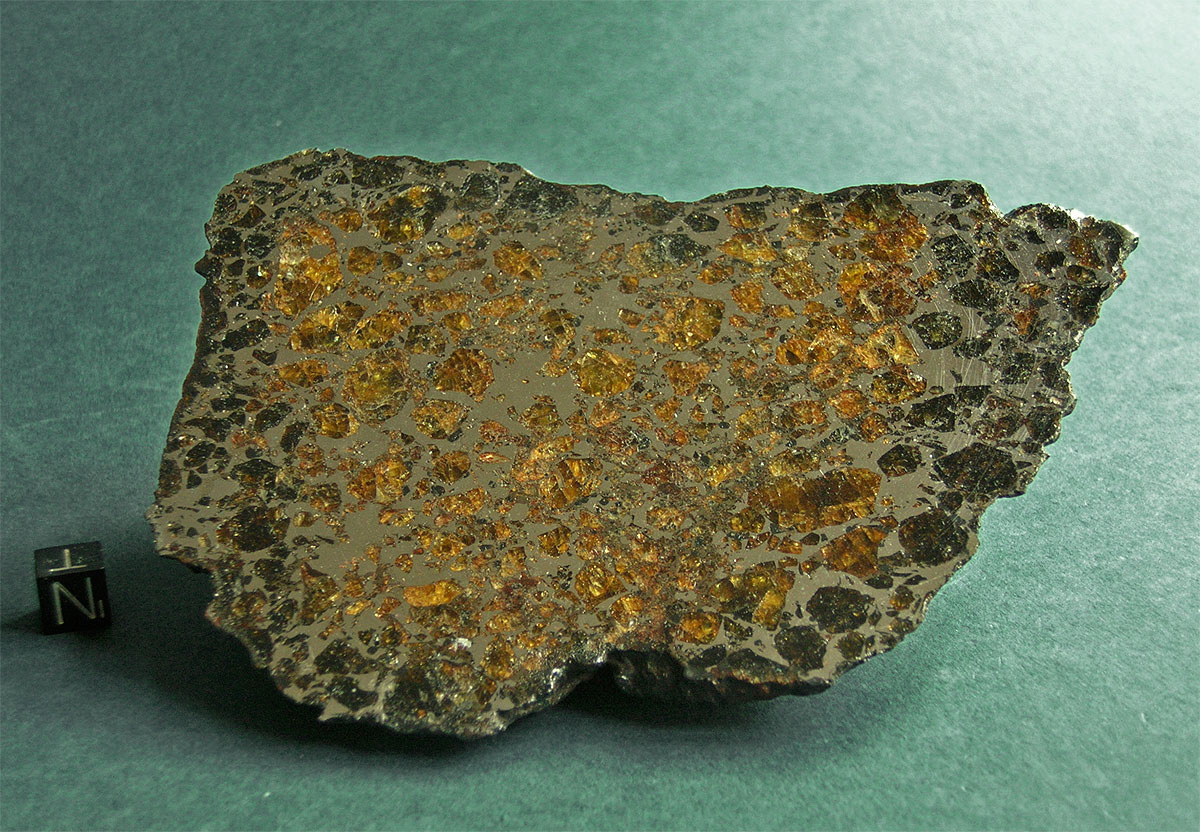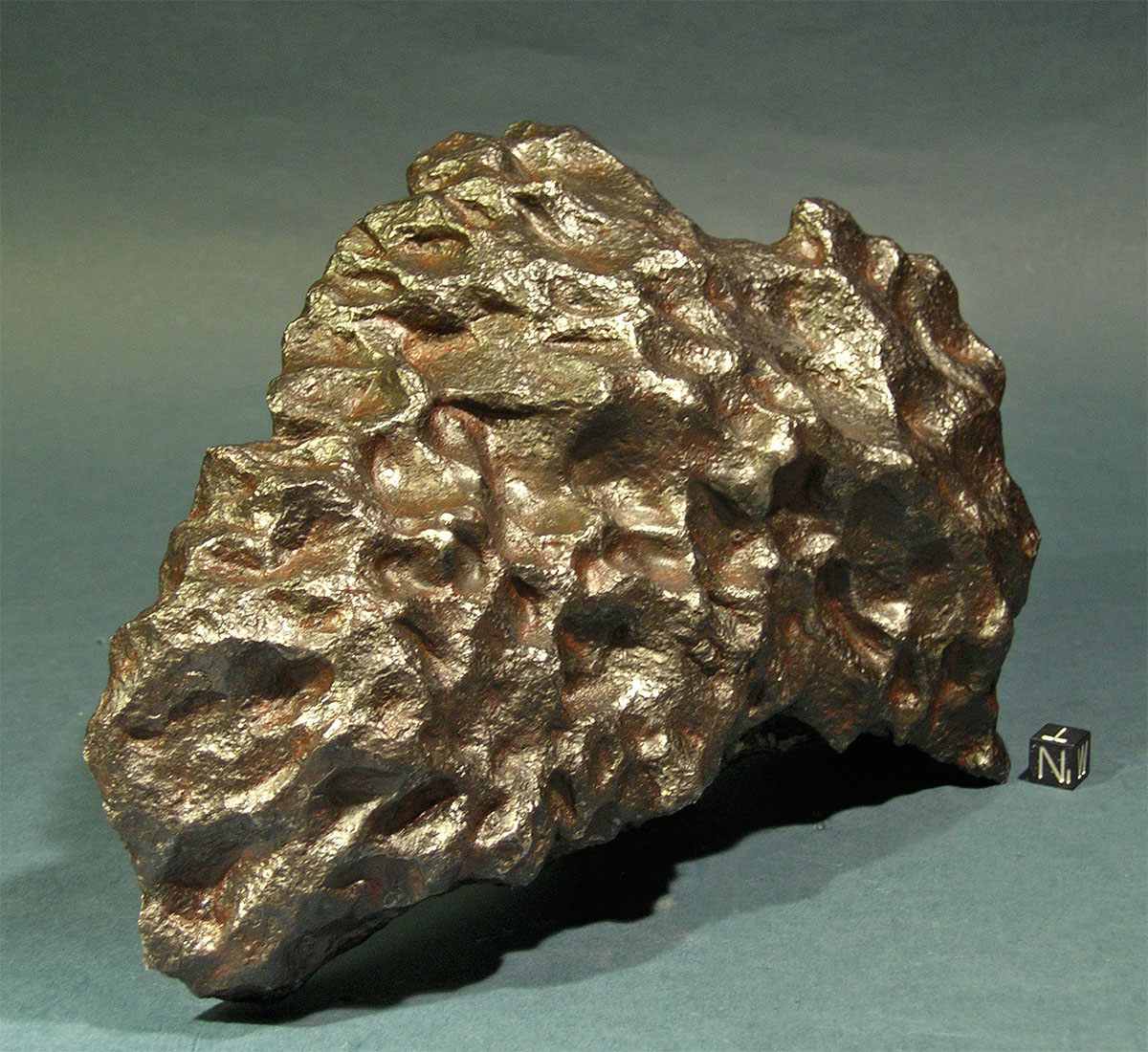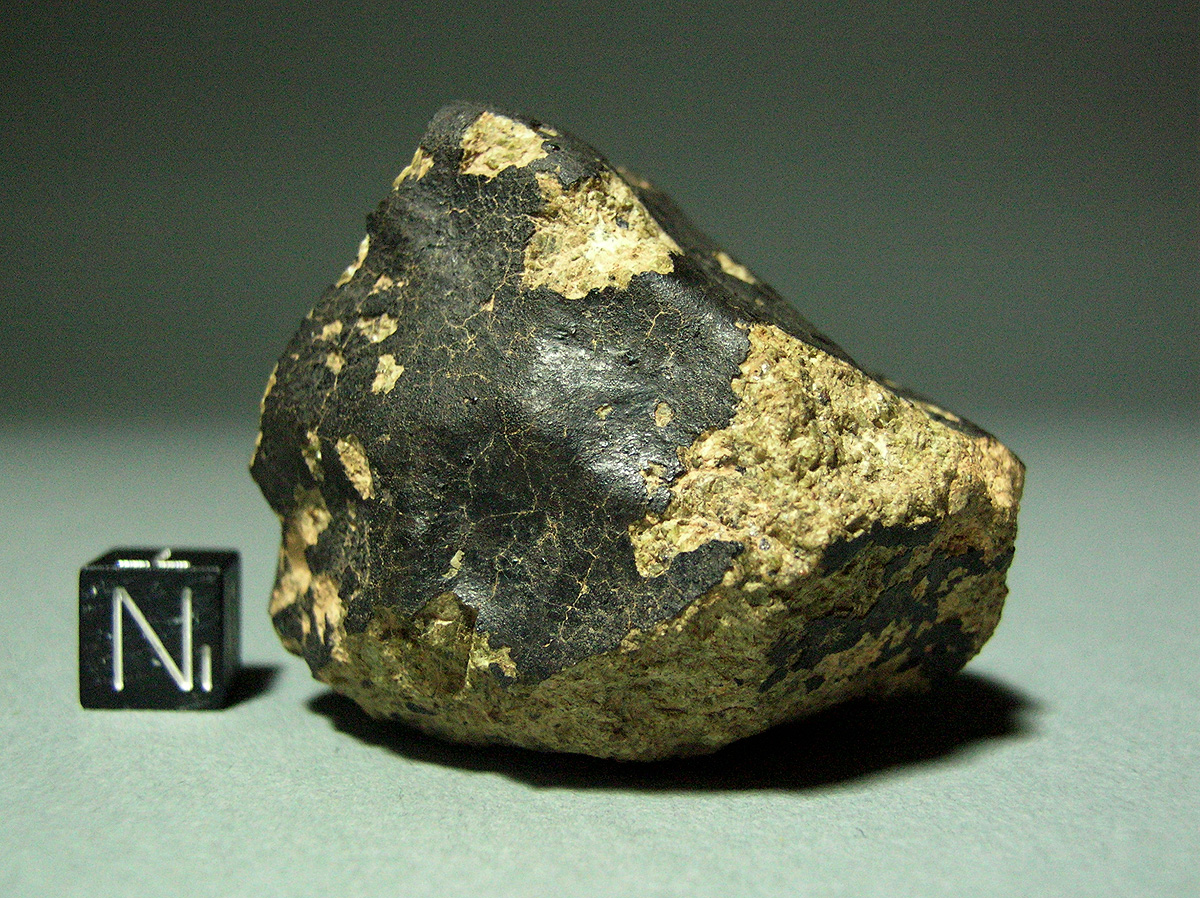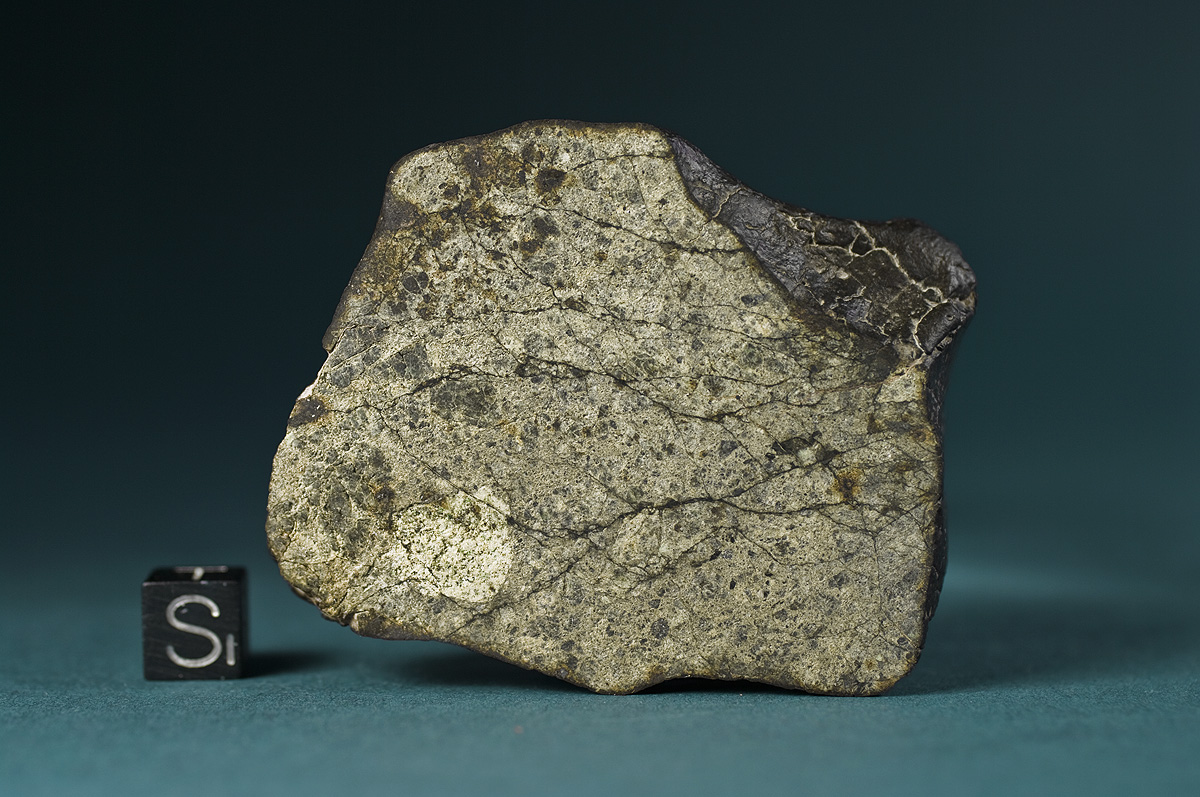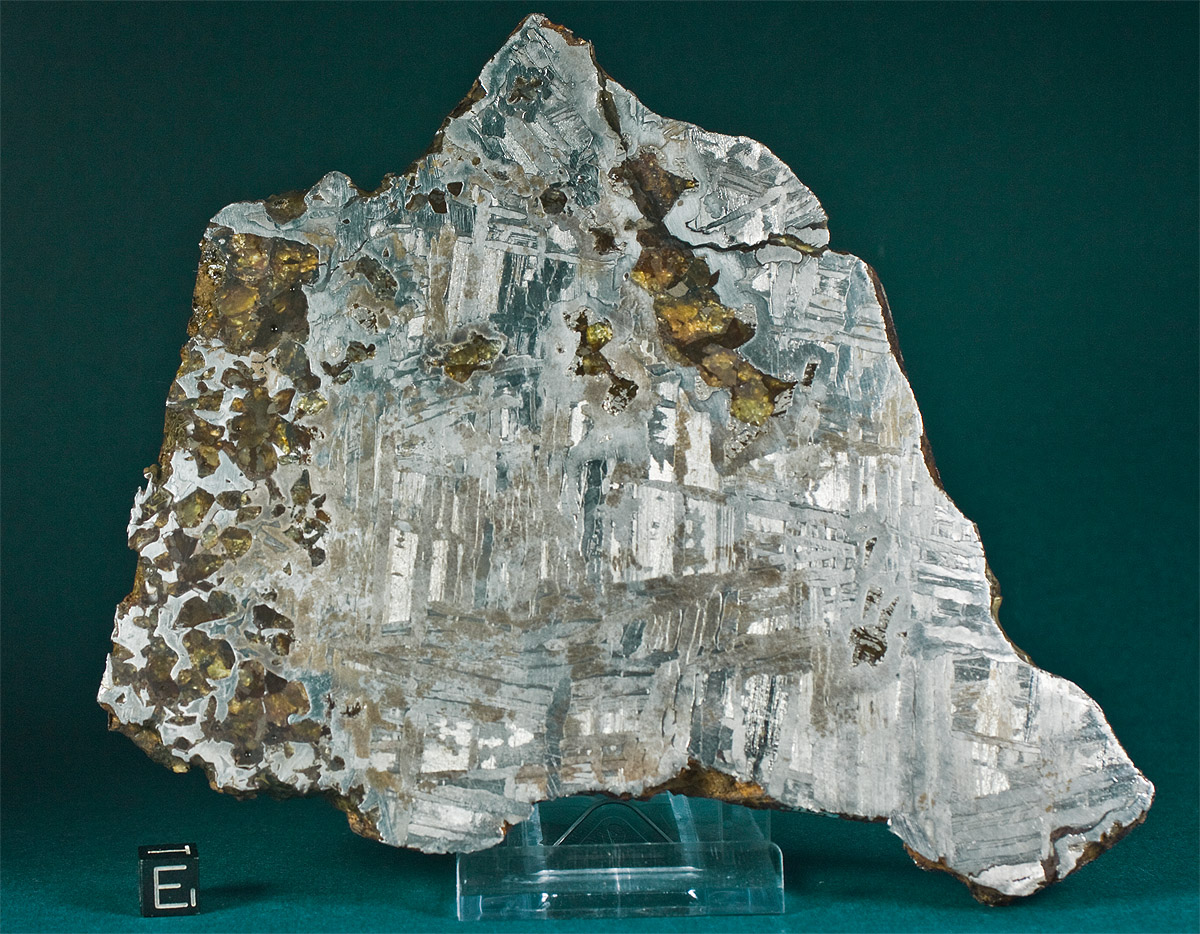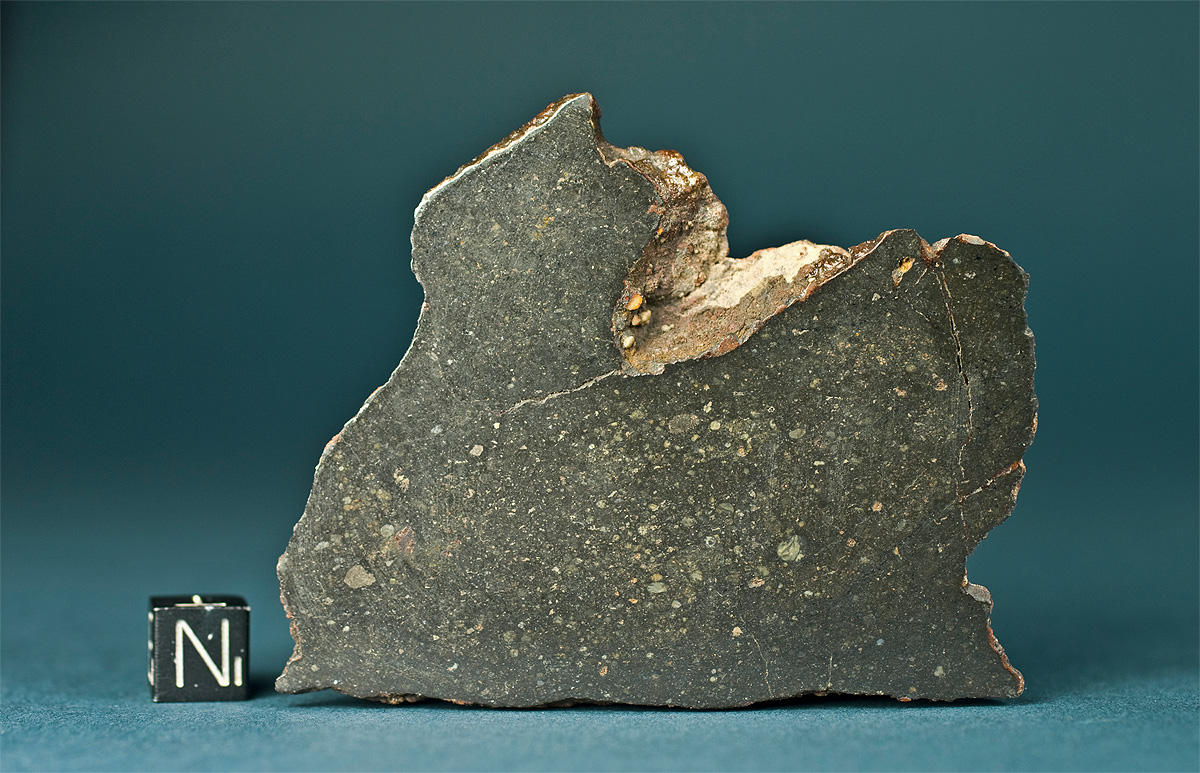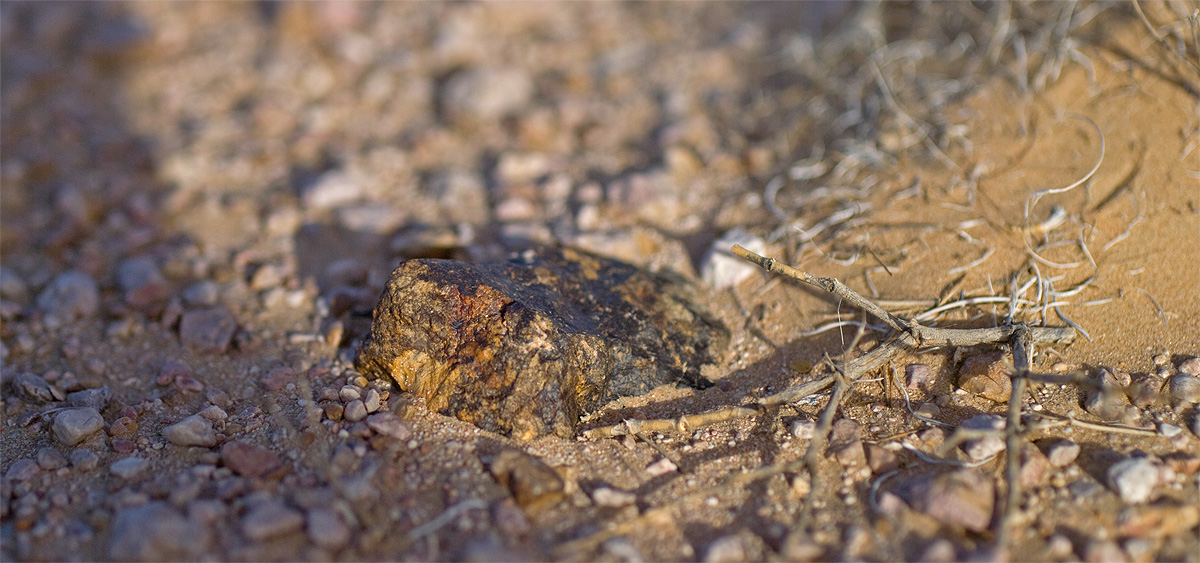Meteorite Recon | Finds
Meteorite search expedtions into continental deserts, meteorite features, collection specimens and photography
Meteorites, Meteorite, meteoritic, iron, meteorites, photos, pictures, in situ, strewnfield, strewn field, impact, fall, finds, Meteorite searching
149
archive,paged,tax-portfolio_category,term-finds,term-149,paged-3,eltd-core-1.0.1,ajax_fade,page_not_loaded,,borderland-ver-1.8, vertical_menu_with_scroll,smooth_scroll,paspartu_enabled,paspartu_on_top_fixed,paspartu_on_bottom_fixed,transparent_content,grid_1300,wpb-js-composer js-comp-ver-6.0.3,vc_responsive,elementor-default,elementor-kit-6471
Stone-iron, Pallasite (PAL)
District Gomel, Minsk, Belorussia
Find: 1810
TKW: 823 kg
Endcut 1,091 g
Until today, meteorites are being found in the vast strewn field of the Brahin meteorite. The mostly large individuals (>30 kg) are buried up to 6 feet in the sandy soil. Ammunition and shrapnel from the heavy fighting in 1944 hampers the search and the recovery of the meteorites in the area. This selceted specimen has been perfectly prepared and shows a broad variety of mirror polished olivine crystals. The conserved rear side gives an impression of the appearance of a pallasite surface in find condition.
Iron, coarse octahedrite, Og
Gran Chaco, Argentinia
Find: 1576,
TKW: ~100 MT
Individual: 8.020 kg
Oriented shield shaped mass of similar appearance to the Cabin Creek meteorite. The breast side is covered by deep regmaglypts still sheltering remnants of fusion crust on their bottom. The regmaglypts originate from the broad apex of the shield and shape into distinct furrows towards the edge. There are no regmaglypts on the concave trailing edge of the meteorite. Exceptional specimen and certainly the best oriented Campo del Cielo meteorite we have seen.
Achondrite, diogenite, ADIO
Outat el Hadj, Morocco
Find: 2007
TKW: 232.60 g
Individual 119.00 g
Two stones of this Johnstown-like diogenite were found near the village of Outat el Hadj in Morocco by Mr. Abdessmad in 2007. One more stone of 61.10 g was found in the same location in 2008. The meteorites show large (>11 mm) orthopyroxenes and a fresh crust with some spalling or beginning desert etch, as well as remnant flow lines. In the Meteoritical Bulletin data base this meteorites hibernates in the “provisonal” state ever since its classification in 2009.
Stone, chondrite, LL6, S3, W1
Northwest Africa
Find: 2007
TKW: >212.90 g
Endcut: 179.92 g
This meteorite was purchased at the St. Marie aux Mines Mineral Fair in June 2008 from a Moroccan seller as an “eucritic achondrite”. In the classification at the MNB the specimen was recognized as an ordinary shocked LL6 chondrite. The meteorite has been classified by the Institute of Mineralogy at the Museum of Natural History / Humboldt University in Berlin, Germany, and published in Meteoritical Bulletin, no. 101, MAPS 47.
Stony-iron, pallasite, main group
Magadan district, USSR
Find: June 1967
TKW: >323 kg
Fullslice 847.20 g
“The larger specimen has been found by the geologist F. A. Mednikov during a geological survey. The meteorite hardly seen was lying among the stones of the brook-bed. The smaller specimen was found at a distance of 20 m from the first one by I. H. Markov with a mine detector in october 1967. The main mass was turned to the Academy of Sciences of the USSR.” (Meteoritical Bulletin nr. 43) In recent years Russian prospectors have found more meteorites of the Seymchan pallasite at the original find location, some of them weighing as much as several hundred kilos. Most of the material, however, is not of the pallasitic but of the sideritic phase. This is an etched fullslice showing the transition phase of the pallasitic and the sideritic material.
Stone, chondrite, L5, S5-6 xenol., W1
Al Wusta, Sultanate of Oman
Find: 1954
TKW: 1.75MT
Endcut: 147.90g
Ghubara is a piece of meteorite history. Together with the L6 chondrite Tarfa it was the first meteorite ever discovered in Oman. Ghuabara also has an intriguing lithology. There are numerous clasts and inclusions in the chondrite. Some of them providing links to enstatite chondrites (see M.A. Ivanova et al.: RUTILE AND Mn-RICH CHROMITE-BEARING SULFIDE NUGGETS IN AN UNUSUAL INCLUSION FROM THE GHUBARA (L5) CHONDRITE). The lower image shows a facsimile of the original entry in the Meteoritical Bulletin no. 13, Moscow (1959). Specimen is a present from the finder.
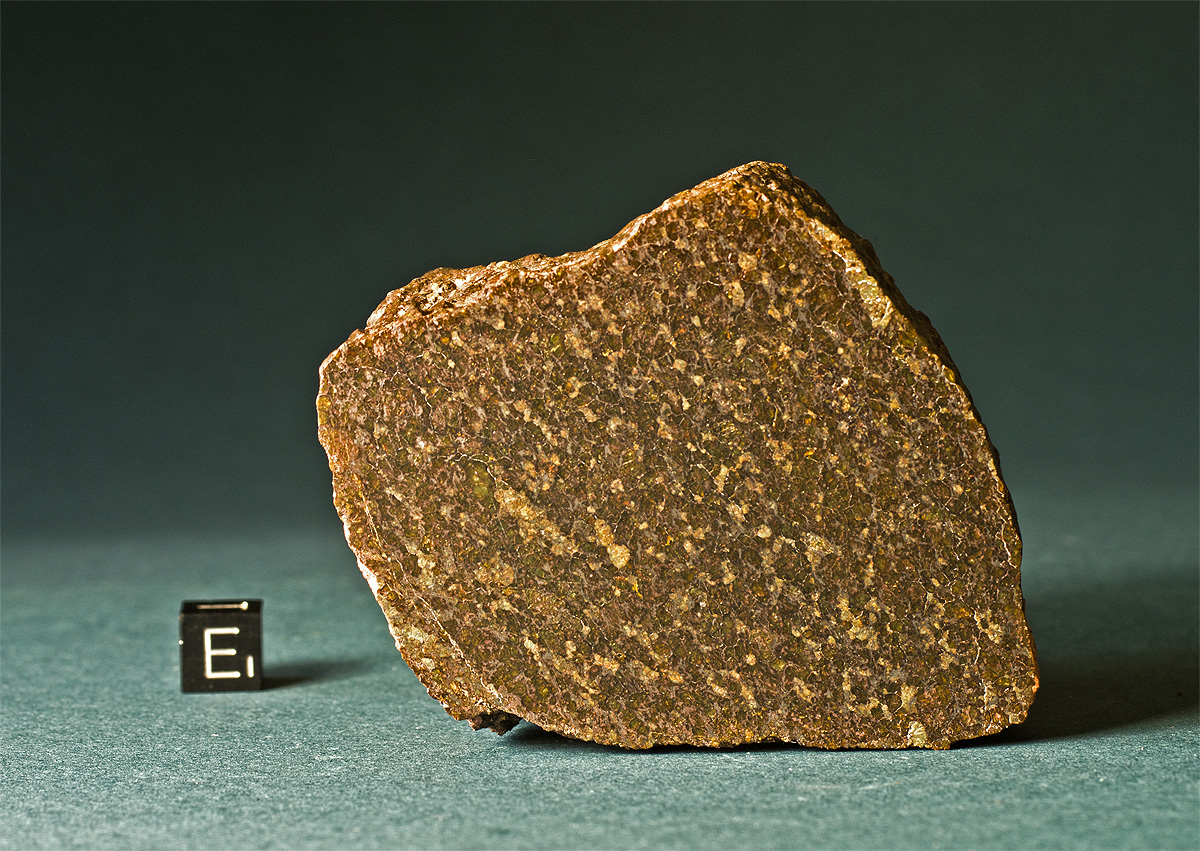
Stone, achondrite, ureilite, AUR
Nouadhibou, Mauritania
Find: October 2012
TKW: 1,200 g (one piece)
Endcut: 613.5 g
Half individual of the ureilite NWA 8168. The sample has one cut surfaces polished to 1500 grit. The original surface shows patches of fusion crust. This is the write up from Meteoritical Bulletin 104:
History: Discovered by local people in the NW area of Mauritania in 2012, purchased in Nouadhibou in 2012 Oct.
Physical characteristics: (R. Bartoschewitz, Bart) One brown fragment of 1200 g. Saw cut shows brown close packed grains. Magnetic susceptibility log χ (× 10-9 m3/kg) = 4.48.
Petrography: (R. Bartoschewitz, Bart) Microprobe examination of a thin section shows olivine and pyroxene grains with triple junctions, grain size 0.5-6 mm. Grain boundaries occupied with graphite and metal. Graphite occurs as elongated areas up to 2 × 7 mm.
Geochemistry: (R. Bartoschewitz, Bart, P. Appel and B. Mader, Kiel) Olivine: Fa21.0±2.0 (Fa14.7-22.1; Cr2O3=0.6-0.7 wt.%; Fe/Mn=44, n=15). Ca-poor pyroxene: Fs7.0 (n=1). Ca-rich pyroxene: Fs15En72Wo13 (n=26). Kamacite: Ni=5.0, Co=0.35, Si<0.3 wt.% (n=6).
Stone, achondrite, eucrite cumulate, AEUC
Zufar, Oman
Find: 1999
TKW: 27.24 kg
Individual 223.7g g
The Dhofar 007 meteorite strewn field was discovered by Russian meteorite prospectors in 1999. More than 27 kg were found within a distribution ellipse 3 km wide and more than 6.5 km long. Due to the untypical texture and color of the slighty weathered eucrites they are hard to spot on the desert surface. The lower image shows the 223 g specimen in situ. The larger part of the meteorite is embedded in the desert pavement with only a small fraction sticking out of the surface. It is a compact irregular ball shaped individual with several regmaglypts and about 50 percent fusion crust.
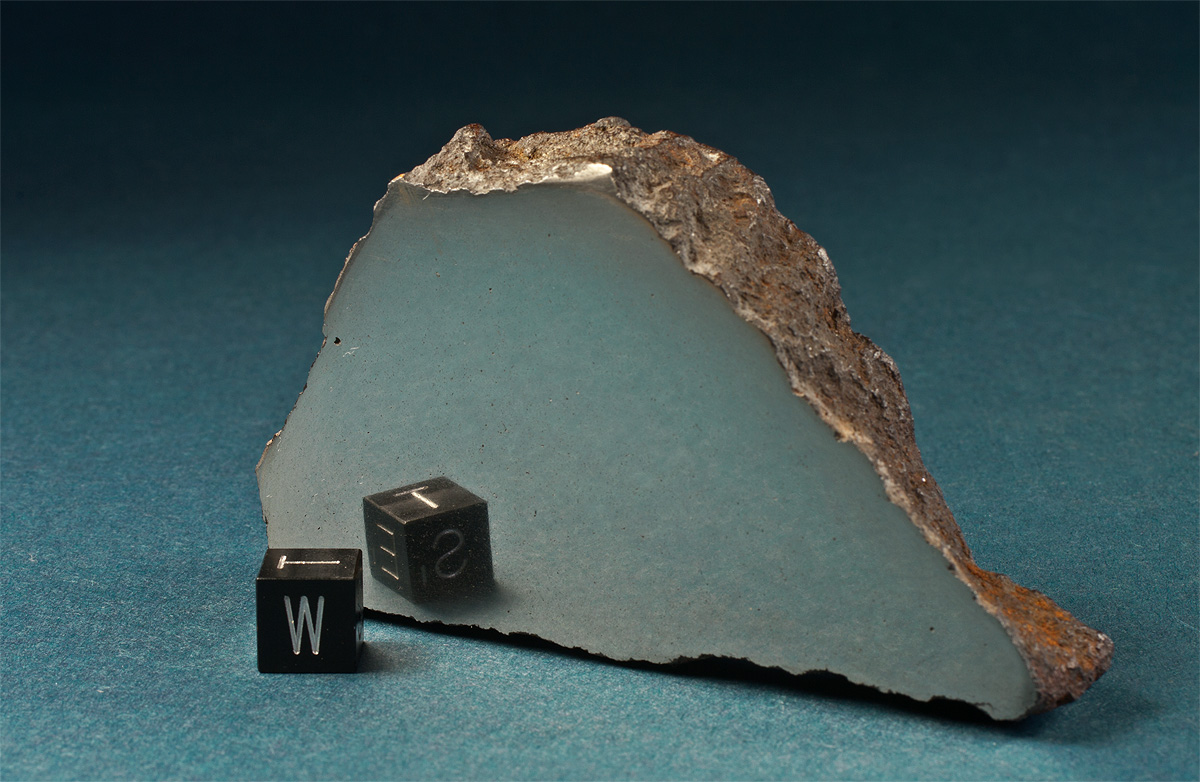
Iron, ataxite, ungrouped
Tanna Tuva, Turvinskaya, Russia
Find: 1913
TKW: 209.40 kg
Endcut: 369.60 g
Polished endcut of the Chinga ataxite. Fragments of this meteorite were discovered in the Chinga river and its tributaries by prospectors searching for gold in 1913. Several expeditions yielded more than 250 specimens until present. Today the location is exhausted and only very few meteorites are still beeing found. Although scientists have tried to locate eventual craters the fall of the Chinga meteorite might have caused no impact structures were found. Based on the deposits the Chinga meteorites are found in it is estimated that the fall took place between 10,000 and 20,000 years ago. Several researchers argued that Chinga fell on a glacier before it was transported to its current find location. The meteorite belongs to the ataxites and has a nickel content of 16.4 percent. This particular specimen has been etched but no Schliren bands were found. The photo shows the unetched polished surface.
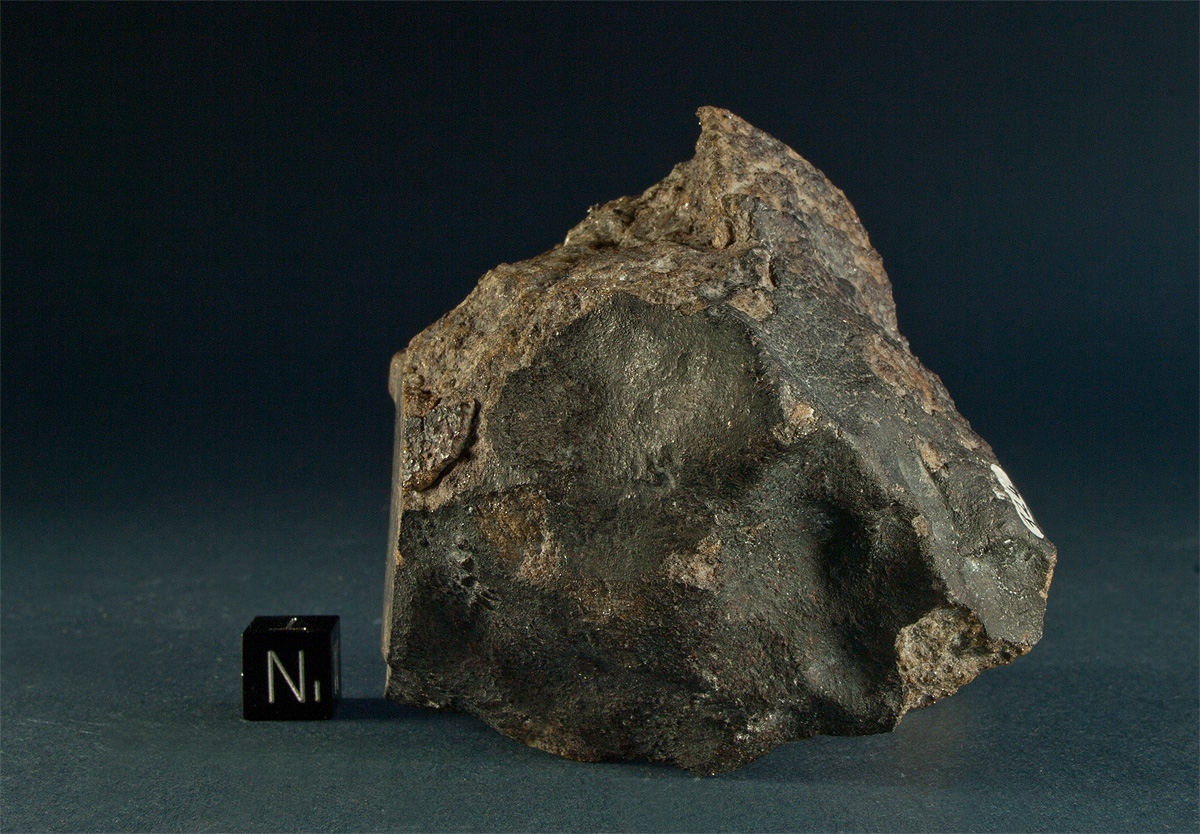
Stone, Carbonaceous chondrite (equilibrated CR-like meteorite) or primitive achondrite
Ténéré Tafassasset, Republic of Niger
Find: February 14, 2000
TKW: 114 kg
Endcut: 276.60 g
Crusted endcut of the Tafassasset meteorite. Tafassasset consists of 26 stones found in the Tenere desert of Niger between 2000 and 2001. The meteorite has yet to be definitively classified as there obviously are considerable textural and compositional differences between individual stones. In the course Tafassasset was classified a) as a metamorphosed CR chondrite in line with other Renazzo-like CR chondrites, and b) as a primitive achondrite close to the anomalous LEW 88763 and other Brachinites. A recent paper by K. G. Gardner-Vandy et al. (2008) agrees that all Tafassasset material circulating in the scientific community is paired but that some stones have distinct oxygen isotopic compositions. The authors suggest that the Tafassasset parent body of FeO-rich material partially differentiated and cooled in a region of the nebula with oxygen-isotopic composition similar to the CR chondrites. However further research is necessary in order to understand the genesis of this most intriguing meteorite.




